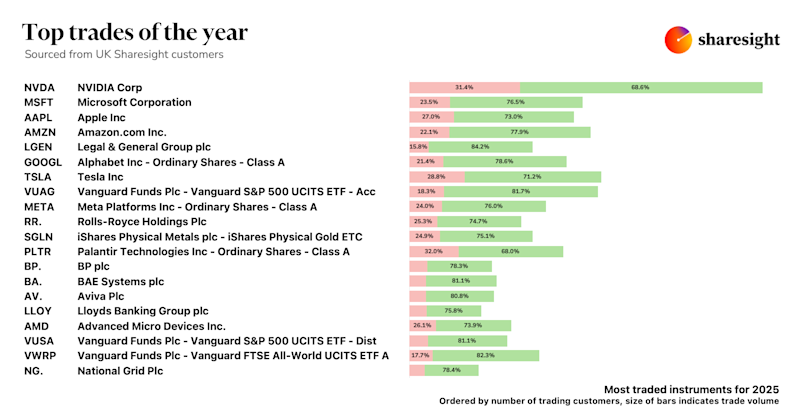What is dividend income?
Disclaimer: This article is for informational purposes only and does not constitute a specific product recommendation, or taxation or financial advice and should not be relied upon as such. While we use reasonable endeavours to keep the information up-to-date, we make no representation that any information is accurate or up-to-date. If you choose to make use of the content in this article, you do so at your own risk. To the extent permitted by law, we do not assume any responsibility or liability arising from or connected with your use or reliance on the content on our site. Please check with your adviser or accountant to obtain the correct advice for your situation.
Listed companies may choose to distribute a portion of their earnings or profits back to shareholders in the form of dividends. While these dividends can be in the form of cash or stock, they are usually intended as a reward given by the company to its shareholders for investing in their shares.
For investors, this dividend income may be both the primary reason to invest in a particular company or part of a broader investment strategy. However, any profits or capital gains from dividend income can create potential tax liabilities for investors. Tax regimes vary from country to country, but it is highly likely that any dividends you earn as a shareholder will be considered taxable income.

How dividend income works
Dividends are one of the ways investors can earn a return from investing in shares. For many, it is the preferred strategy as the sorts of companies that pay dividends are often blue chip stocks that are less volatile than growth stocks, can reduce portfolio risk and generate a consistent cash flow. Investors who reinvest dividends can also take advantage of the power of compounding to build more wealth over time.
Not all companies pay regular dividends but by investing in those that do, an investor can profit when these are distributed to shareholders, usually on a quarterly basis. Dividends are allocated according to shareholding, so if an investor owns 100 shares in a company that pays $1 in dividends annually, they’ll earn $100 per year.
What is dividend yield?
Generally, investors after stocks that pay regular dividends should look for companies with a record of paying dividends, preferably those that increase each year. Assessing a company’s dividend yield is a good starting point as this metric takes a stock’s annual dividend payments expressed as a percentage of the stock’s current price.
For example, a $100 stock that pays an annual dividend of $5 per share has a 5% dividend yield. However, investors should remember that dividend yields may fluctuate and are best used for quickly comparing similar companies rather than as the basis for an investment thesis. To better understand your potential earnings, try our dividend calculator and see how dividend yield impacts your returns.
Do dividends count as income?
Dividend payments are usually considered taxable income, but this may depend on the investor’s personal circumstances and jurisdiction. For example, in the US, both dividend and interest payments received by investors are considered taxable income. However, there is a notable difference between the rate the two are taxed at.
In Australia, there are two types of dividends in terms of tax: franked dividends and unfranked dividends. Franked dividends have a tax credit attached and were created to ensure shareholders don’t pay double tax. When a shareholder pays tax with a franked dividend, they will only be taxed on the dividend portion, minus the franking credit.
In the UK, the amount of tax an investor ends up paying on their dividend income depends on their income tax rate. For example, if you are a basic rate taxpayer on your income tax rates then you will pay 8.75% tax on your dividends.
Types of dividend income
There are several different types of dividends a company may use to pay shareholders, but these vary from country to country. Regular dividends are the most common type of dividend, where companies pay a flat amount per investor share owned, regardless of the company’s financial performance. Generally, these dividend payments are issued quarterly.
A second option is dividend reinvestment plans (or DRPs) where dividends are paid in the form of additional shares instead of cash, which investors can reinvest back into the company, often at a discount.
Thirdly, a special dividend is the term for one-time payments sometimes issued by companies when they’ve been especially profitable or have a surplus of cash without an immediate need, and they want to share the wealth with investors.
When to record dividend income
Investors owning dividend stocks will be informed by the company on the timing of payments based on the type of dividend they offer, usually quarterly. The company’s board of directors must approve each dividend before the payment process can begin. The dividend payout process can be summarised in a few key dates:
-
Declaration date: The date the dividend is declared.
-
Ex-dividend date: The date by which investors must own the stock to be entitled to receive dividends.
-
Record date: The cut-off date that determines which shareholders are eligible to receive dividends.
-
Payment date: The date when investors will receive payment, typically one month after the record date.
Once dividends have been approved, qualified shareholders are usually notified directly. Generally, a dividend is included in a shareholder’s assessable income in the year the dividend is paid or credited to the shareholder.
Is dividend income a regular income?
Some investors purposely invest in dividend-paying stocks to build up a portfolio of investments that pay income. This is especially common for investors nearing or in retirement. This income is not necessarily ‘regular’ or reliable however, as the majority of dividend-paying stocks pay dividends quarterly or semi-annually, and companies may choose to downgrade or forego dividend payments at any time, depending on their financial situation. Investors should also note that in many countries dividends are considered taxable income, which further reduces the ‘income’ investors can make from dividend payments.
Summary
Investing in dividend-paying stocks is one way for investors to earn income from their portfolio. Investors using this strategy, however, should be aware of the potential tax implications of dividend investing, and take this into account when forecasting their cash flow. By using Sharesight’s portfolio tracker, investors can automatically track dividend payments, stay on top of upcoming dividends and calculate their taxable income – saving time and money at tax time while also getting the full picture of their portfolio’s performance.
Automatically track your dividends with Sharesight
Join hundreds of thousands of investors using Sharesight to get the full picture of their performance, inclusive of dividends, capital gains, brokerage fees and foreign currency fluctuations. Sign up today so you can:
-
Track all your investments in one place, including stocks in over 40 major global markets, mutual/managed funds, property, and even cryptocurrency
-
Automatically track your dividend and distribution income from stocks, ETFs and mutual/managed funds
-
Run powerful reports built for investors, including performance, portfolio diversity, contribution analysis, multi-period, multi-currency valuation and future income (upcoming dividends)
-
Easily share access to your portfolio with family members, your accountant or other financial professionals so they can see the same picture of your investments as you do
Sign up for a FREE Sharesight account and get started tracking your investment performance (and tax) today.
FURTHER READING

Sharesight users' top trades – December 2025
Welcome to the December 2025 edition of Sharesight’s monthly trading snapshot, where we look at the top buy and sell trades by Sharesight users over the month.

Top trades by UK Sharesight users in 2025
Welcome to the 2025 edition of our UK trading snapshot, where dive into this year’s top trades by the Sharesight userbase.

Top trades by global Sharesight users in 2025
Welcome to the 2025 edition of our global trading snapshot, where we dive into this year’s top trades by Sharesight users around the world.